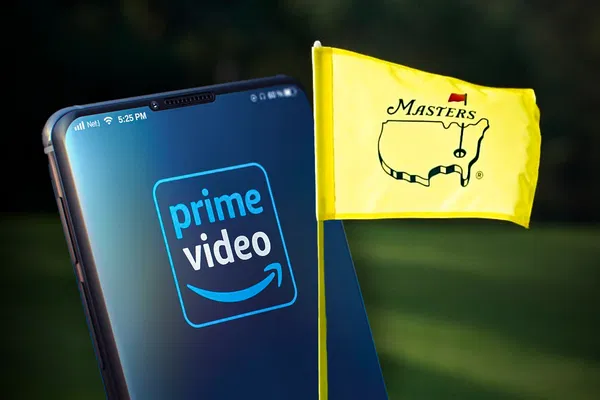What the Deal Is
Beginning in 2026, Amazon Prime Video will become a domestic broadcaster for The Masters, working alongside long-time partners CBS and ESPN.
The specific arrangement: Amazon will stream two hours of live coverage during the first and second rounds (Thursday & Friday) from 1-3 p.m. ET. After that, ESPN takes over.
Also, during the final two rounds (Saturday & Sunday), the streaming service Paramount+ will carry lead-in coverage from noon to 2 p.m. ET before CBS airs the broader coverage from 2-7 p.m. each day.
The result is significantly more overall coverage. Total “primary broadcast and streaming coverage” will increase from about 18 hours in 2024 to at least 27 hours in 2026.
—
Why This Is Significant
1. Streaming Enters the Inner Circle
For decades, the Masters has been one of the most “traditional” of sporting events: strong legacy TV partners, careful control over broadcast windows, limited commercial intrusion, etc. The inclusion of Amazon, a major streaming platform, means those traditions are bending — not breaking, but evolving.
2. More Coverage = More Access
Fans will get earlier access to live action, especially on the “quiet” early rounds where often less was televised or streamed. The two-hour Amazon window fills a gap before ESPN’s usual coverage, meaning scenes, competitors, and storylines that might have been missed will now be seen.
3. Incremental Migration of Major Sports to Streaming
This move is in line with broader trends: streaming platforms are increasingly competing for high-profile sports rights (NFL, NBA, etc.). The Masters affiliating with Amazon signals that traditional golf majors are recognizing streaming as essential to reach changing audiences.
4. Pressure on Rights, Costs, Viewer Expectations
With streaming, production costs, rights fees, and consumer expectations shift. Viewers may expect more flexibility (multi-streams, different camera angles, analysis on demand). Broadcasters will have to invest in streaming quality, UX, and technology. Amazon’s involvement means the Masters will likely have to match or exceed what digital sports platforms are doing.
5. Potential Fragmentation & Complexity
As more platforms get involved (Amazon, ESPN, CBS/Paramount+), there is a risk that fans must juggle subscriptions or platforms to see full coverage. Depending on how the rights and streaming access are structured, this could make things more complicated for some viewers.
—
What Could Change (and Some Possible Downsides)
More Innovation in Presentation: Amazon may bring different production values, perhaps more interactive features, alternate feeds, or leveraging its streaming infrastructure (low-latency, high quality video, possibly VR/immersive options). Fans may get richer online/digital content around the event.
Advertising & Monetization Dynamics: Because streaming can allow more targeted ads or premium offerings, there could be new commercial models. Augusta National has traditionally kept commercials minimal; maintaining that ethos while scaling coverage could be a balancing act.
Viewer Behavior & Expectations: Those used to linear TV might find value in flexibility of streaming; younger audiences especially expect streaming. This could push other golf tournaments or majors to follow suit. Once one marquee event shifts more into streaming, others are likely to.
Access Issues: Not all regions have the same streaming rights or access. Some viewers may have to pay for new subscriptions or may be excluded where Amazon/Paramount+ deals don’t reach. Also, broadband quality matters — streaming works well only if internet access is reliable.
Impact on Legacy Broadcast Partners: CBS, ESPN, and others will need to adapt. They may lose some exclusive “teeth” or find themselves competing with their streaming counterparts in terms of features. But they still retain major coverage windows. The deal is structured to complement, not replace, ESPN and CBS.
—
Broader Implications for Golf and Sports Media
The deal could serve as a template for other high-profile sporting events to incorporate streaming more deeply rather than as an afterthought. Golf majors, international competitions, etc., may be pushed to offer more seamless cross-platform coverage.
It may accelerate the decline of “TV-only” rights deals, or push networks to renegotiate in ways that give more streaming visibility.
Viewer expectations are shifting: more hours, more access, sometimes interactivity. The sports world is increasingly “on demand, everywhere.” Deals like this suggest that even events steeped in tradition cannot ignore that shift.
Monetization strategies will evolve: subscription models, bundled rights, hybrid streaming/TV models, maybe even more global rights deals to reach international golf fans who increasingly prefer streaming.
—
What to Watch For
How Amazon presents its coverage: Will it be fully produced (own commentators, graphics, etc.), or will it piggyback off existing providers? As of now, it’s not clear if Amazon will use its own production or share production resources with ESPN/CBS.
Quality & Features: Audience experience (streaming reliability, UI, alternate camera angles, behind-the-scenes, etc.) will matter. If Amazon delivers well, it may set a new standard.
Pricing & Access Terms: Whether these streaming windows are included in standard Amazon Prime memberships, or need extra fees. Also, regional availability will be important for non-US fans.
How fans respond: Do they appreciate the additional hours and options? Or do some see it as fragmenting coverage and making it more complex to follow?
How other events/golf tournaments respond: Will this force others to expand their streaming offerings, or seek similar deals?
—
Conclusion
Augusta National’s deal with Amazon is more than just “another broadcasting partner.” It marks a shift in how one of golf’s most sacred events is made accessible, reflecting changing media consumption trends. While the core tradition of the Masters — the ambiance, prestige, ritual — likely remains intact, the delivery method is evolving. For golf coverage, this could be one of those watershed moments: expanding access, increasing expectations, and pushing streaming from the periphery into the center.
If you like, I can pull together some comparisons — for example, what this means relative to how other majors (U.S. Open, The Open, PGA) are handling streaming, and whether this gives The Masters a competitive advantage in viewer reach. Do you want me to do that?
